Watering
Part 4 of 6
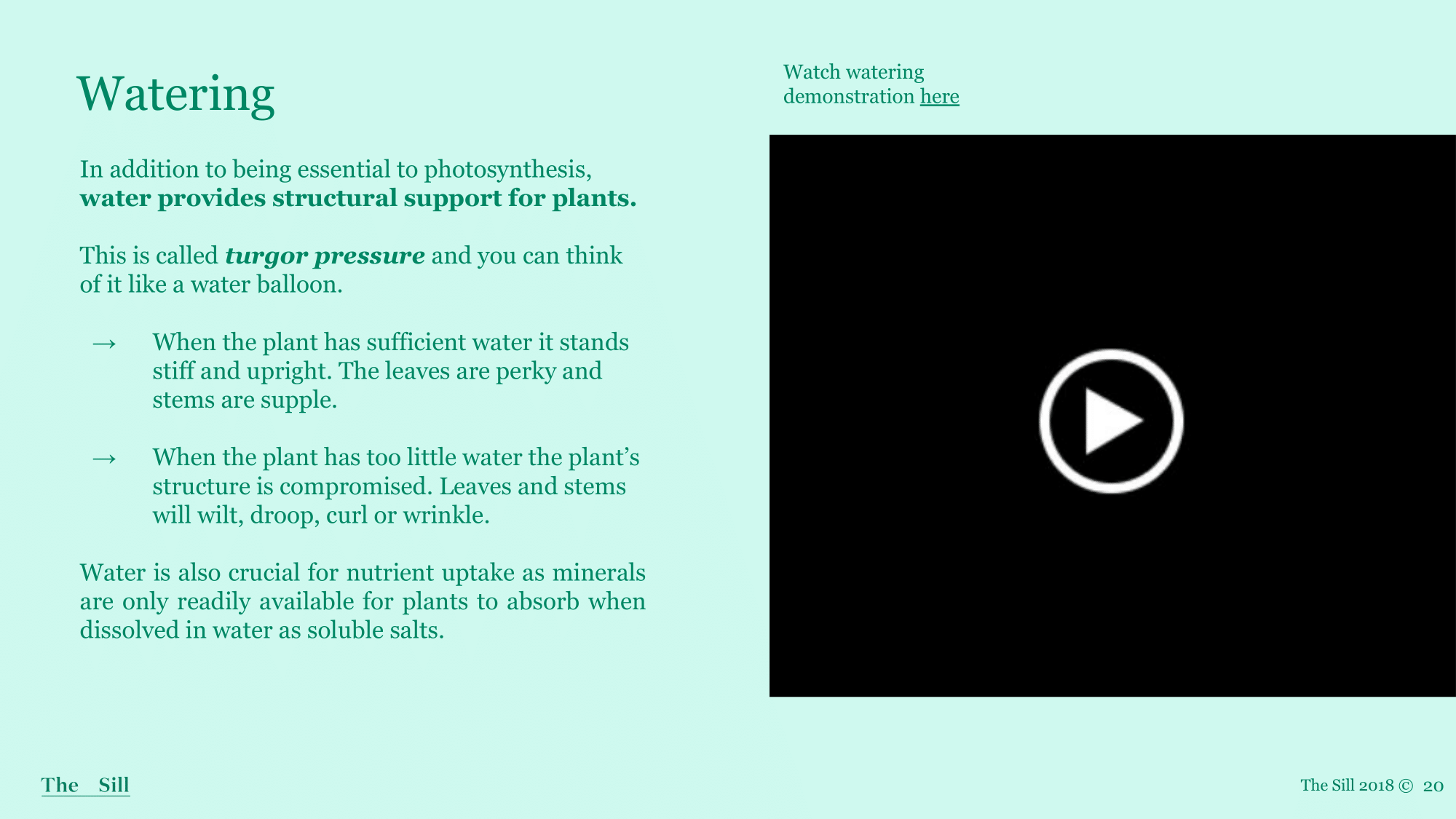
Overview
Video can be accessed through this link.
- Due to the typically high chlorine content of tap water, it may be advisable to use filtered water for more sensitive plants. Alternatively, let water sit for 24 hours or even in direct sunlight which helps to get rid of chlorine. Filtering water also removes vital minerals, so regular fertilizing will be necessary.
- Best to not use solely distilled water which is chemically inert so it wouldn’t add some essential minerals like calcium and magnesium that plants can get from tap water, and can also leach out the essential nutrients present in soil if a planter has a drainage hole! Better to use distilled water in intervals (1 month of just watering with distilled water).
- When watering, always use warm/tepid water rather than cold or hot water which can harm and shock the roots.
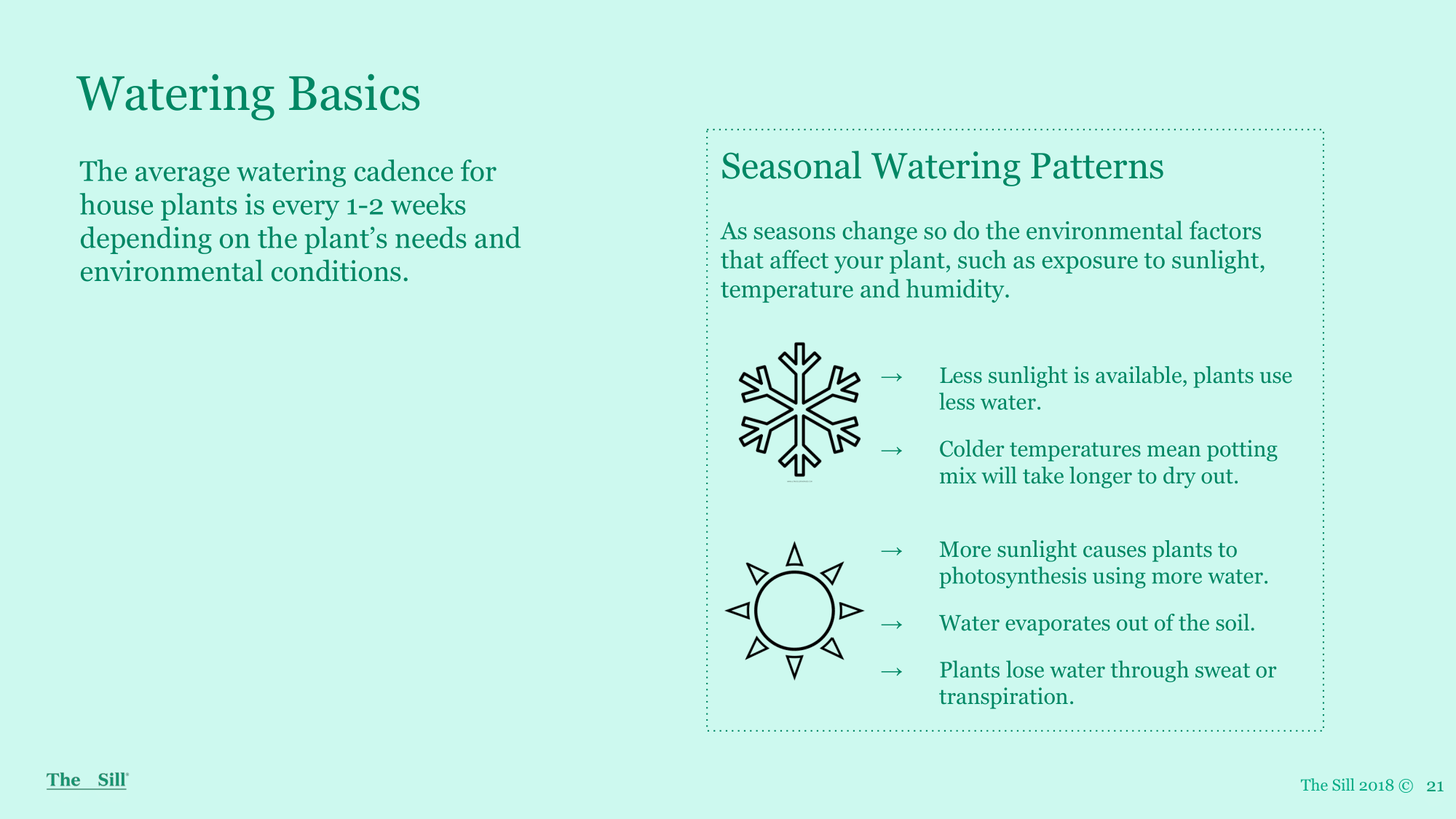
Basics
All plants want to dry out to some extent between watering. Understanding the plants’ native habitat can help you to recreate the potting mix and environmental conditions it needs to thrive. For instance, a desert succulent will need water every 2-3 weeks compared to a rainforest Calathea that will need water every week.
- The more light and/or heat the plant is exposed to, the more water it will need (and vice versa); which is why we increase watering during the summer and decrease in winter.
- The size of the plant also affects it’s watering needs. Plants with a larger volume of potting mix will hold water for longer and thus don’t need to be watered as frequently as smaller plants that don’t retain as much water.
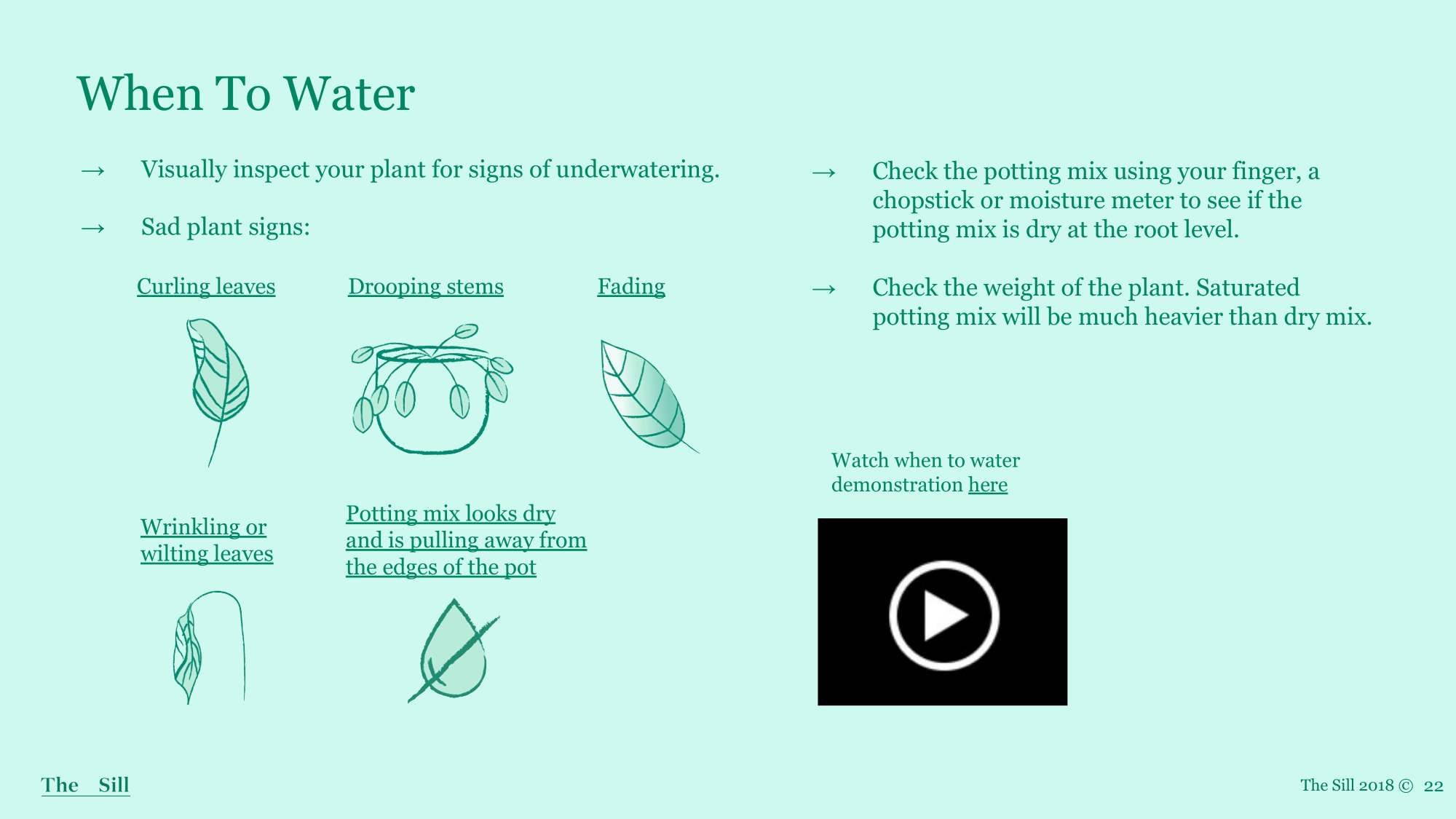
When To Water
Signs of underwatering can include:
- Curling leaves
- Drooping stems
- Wrinkling or wilting leaves
- Fading
- Potting mix looks dry and is pulling away from the edges of the pot.
Potting mix is a sponge that holds water, but when it is too dry it’s not absorptive. Water slowly, a little at a time or use the bottom watering method to give it time to fully saturate.
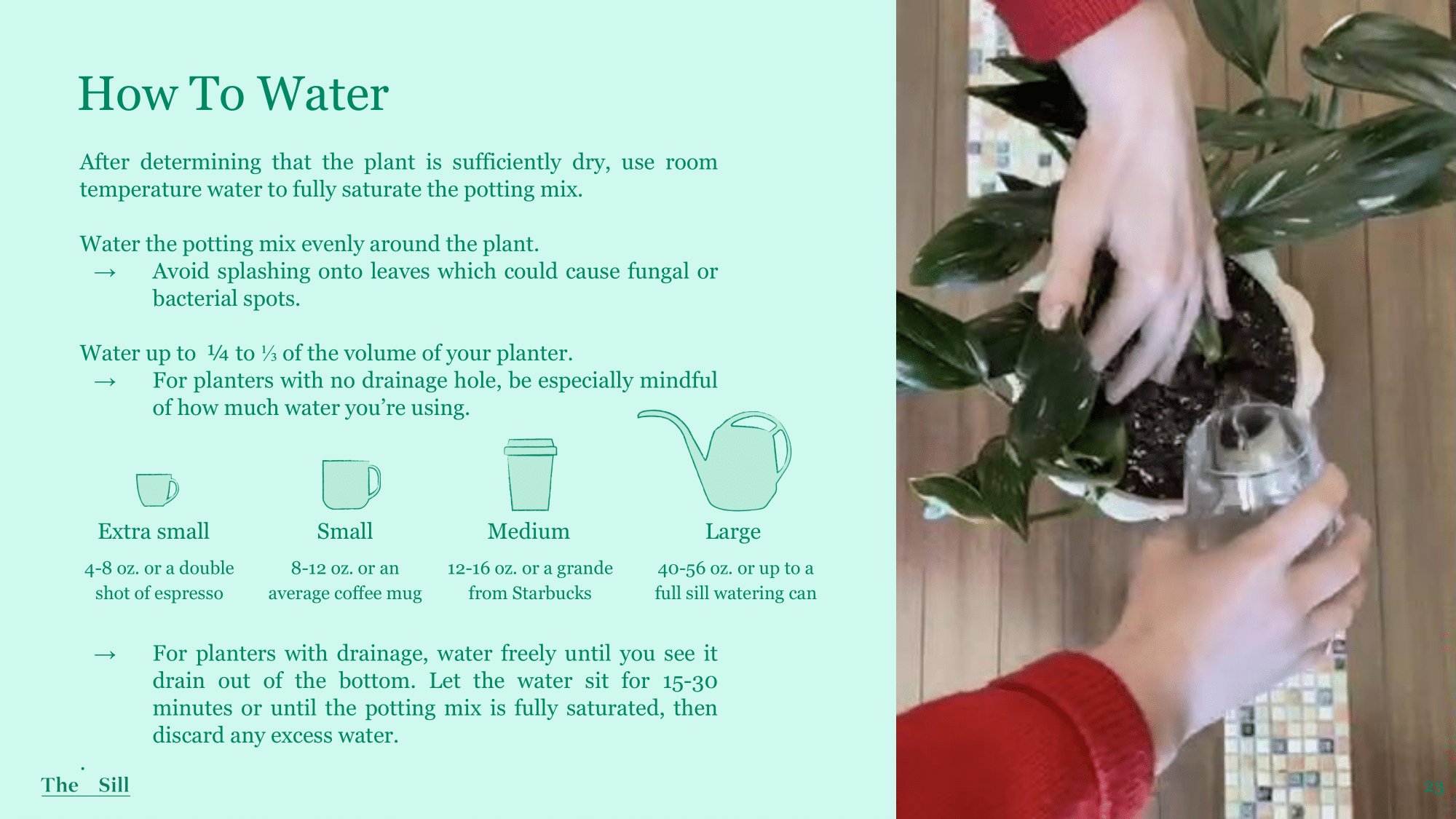
How To Water
Aerating soil (making perforations in the soil using a pencil or chopstick) helps to break up compacted soil, especially for those that like to dry out between waterings, which will help to evenly saturate the soil completely.
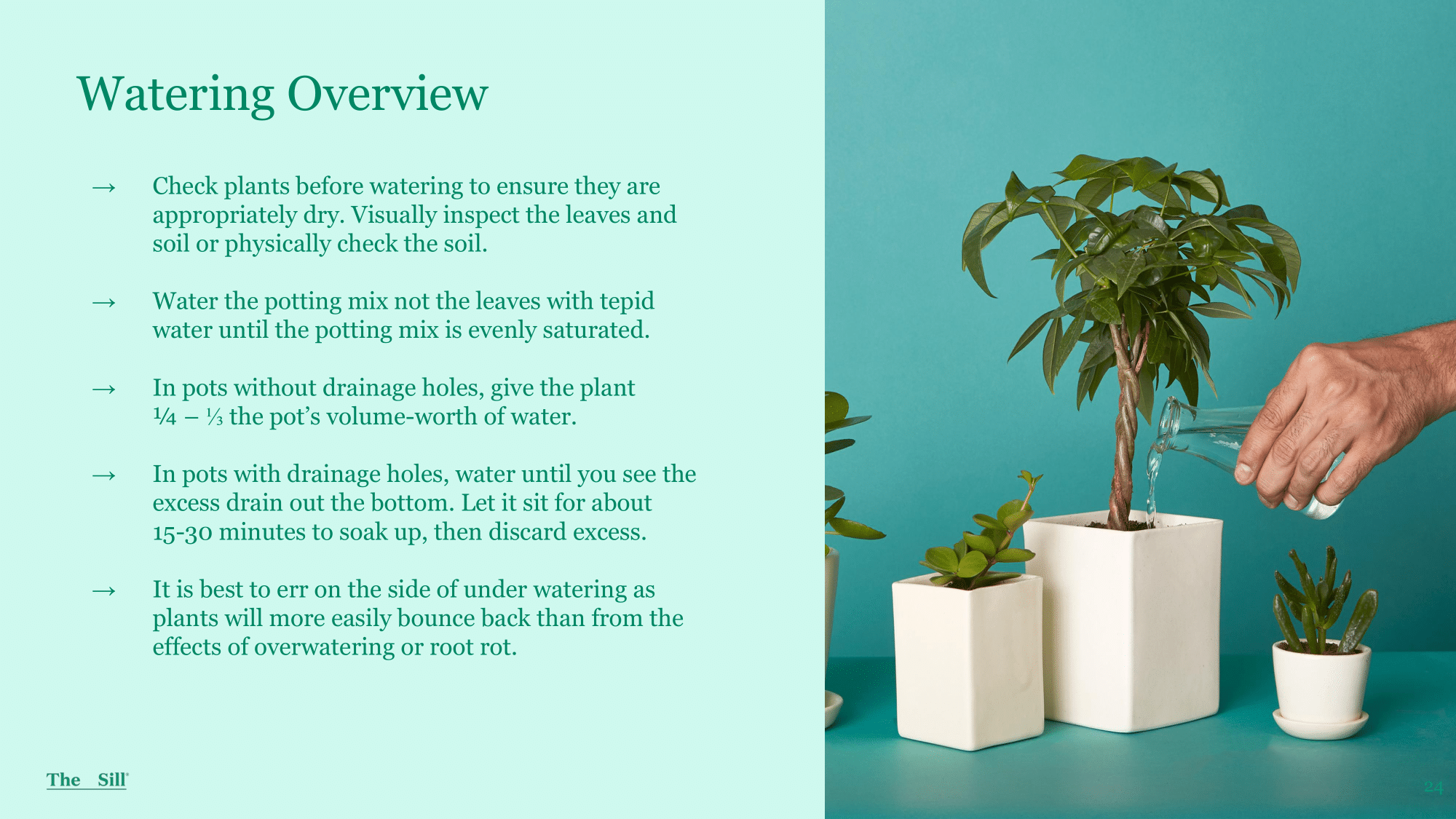
Review
Reflect on these watering questions:
- How do you water your plants?
- Do you prefer planters with or without drainage?
- 1. Getting Started
- 2. Light
- 3. Environment
- 4. Watering
- 5. Potting & Drainage
- 6. Soil Mixes
